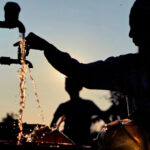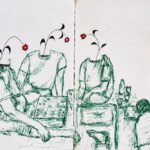At a safe house in eastern Ukraine’s Chasiv Yar, Aslan Mohammed Ocherkhadzhiev, deep in prayer, remains unperturbed. For a brief moment, calm crosses his face, and he recites in Arabic: “In the name of Allah, the Most Gracious, the Most Merciful.”
His face, stern and contemplative, is softened by a long black beard that forms a point at its tip. He raises his arms toward the sky and reveals a maimed hand. The injury is a memory from another life, one where he was fighting Russians during the Second Chechen War in 2000, when he was 23 years old.
Outside the safe house, Ukrainian soldiers, their faces swollen from cold and fatigue, sneak along the destroyed buildings of Chasiv Yar, one of the last villages in the Bakhmut sector before the Russian frontlines. In the distance, artillery lands on both sides, trembling the earth.
In late December, the Commander of the Ground Forces, Ukrainian Colonel General Oleksandr Syrsky, reported on his Telegram channel that intense fighting was taking place all along the eastern front. The Ukrainian army, he wrote, from Kupiansk to Bakhmut and through Lyman, was struggling to resist wave after wave of Russian assaults.



























